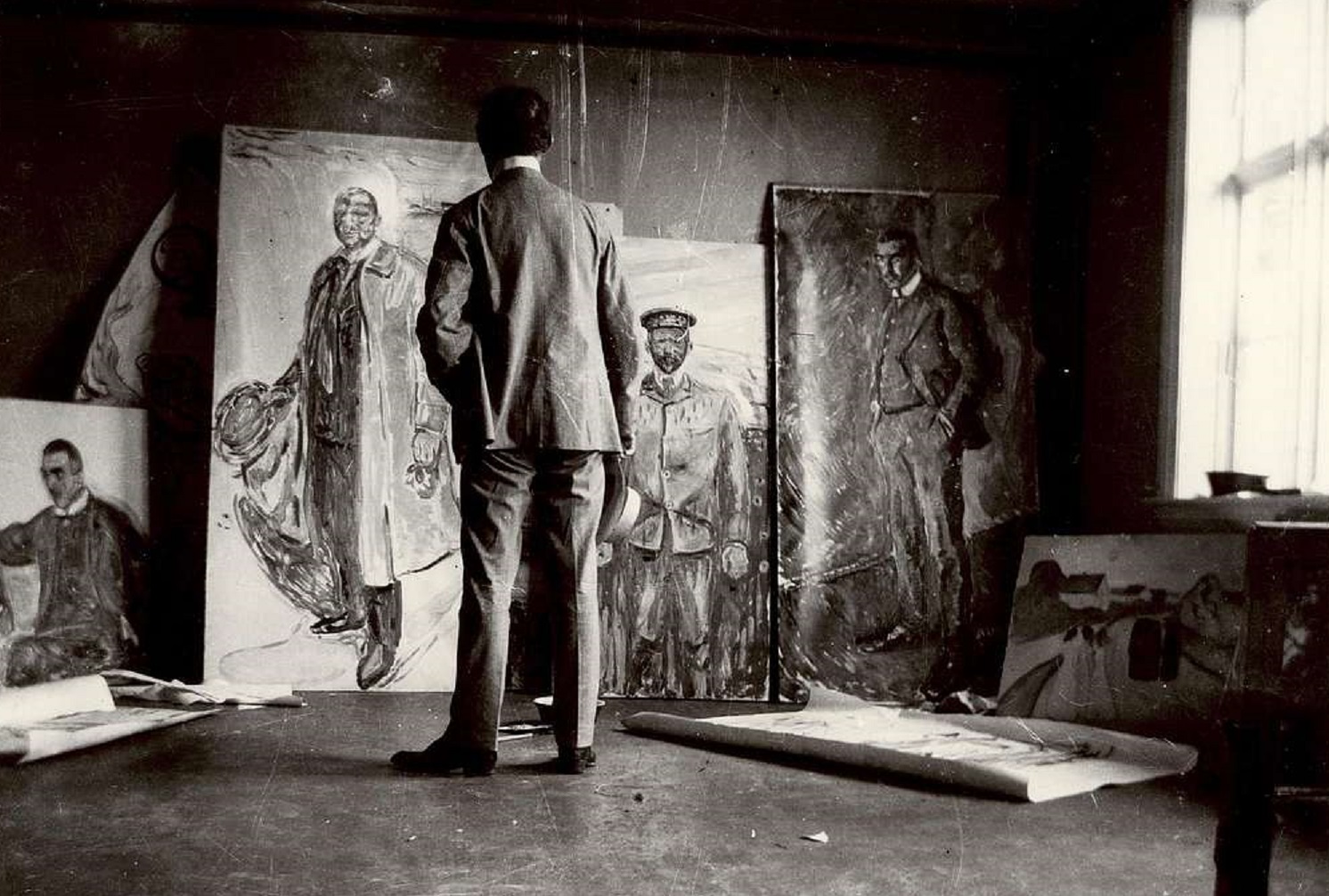The “tormented artist” figure has become a stereotype…but there was nothing typical about the dark, deranged, and fascinating life of Edvard Munch. The man who created the iconic and chilling The Scream certainly had demons at his door—more than you could ever know. Until now, that is.
Edvard Munch Facts
1. He Suffered From A Young Age
Edvard Munch’s childhood was right out of the “tormented soul” textbook. Born in a farmhouse in rural Norway in 1863, Edvard’s father Christian was a priest, while his mother was something of an artist. But tragedy struck hard and quick. When Edvard was just five years old, his still-young mother passed from tuberculosis. Yet it got worse.
 Wikimedia Commons, Nasjonalbiblioteket
Wikimedia Commons, Nasjonalbiblioteket
2. He Watched His Sister Pass
As if it weren’t enough to witness his mother’s slow decline, Munch also got a double blow of tragedy when his favorite sister, Sophie, passed at the age of 15, also of the same illness that felled their mother. During her last days, Sophie begged to get out of bed and sit in a chair—a chair that Munch kept and treasured until the end of his life.
Little did Edvard know it at the time, but this was all just the start of a dark path.
 Edvard Munch(1974), Peter Watkins
Edvard Munch(1974), Peter Watkins
3. His Family Was Dysfunctional
Losing a mother at such a young age is unbelievably painful, and Edvard’s father didn’t help matters. Always prone to morbid habits—he liked to read ghoulish Edgard Allan Poe stories to his tots—the devout patriarch would often keep his children in line by saying that when they misbehaved, their mother was watching from heaven and grieving.
Soon enough, this gruesome behavior got much worse.
 Edvard Munch(1974), Peter Watkins
Edvard Munch(1974), Peter Watkins
4. His Father Was A Maniac
As Edvard grew up, he made a disturbing realization. His father’s religious obsession approached a kind of mania, and Edvard believed that “From him I inherited the seeds of madness”. Indeed, his whole family seemed cursed. Edvard’s sister Laura suffered from mental illness herself, and only one of his siblings, Andreas, went on to marry—only to die just months after the ceremony.
It all began to have a frightening effect on Edvard.
 Edvard Munch(1974), Peter Watkins
Edvard Munch(1974), Peter Watkins
5. He Thought He Was Cursed
Edvard had always been sickly as a child, but he soon grew into a contorted and macabre young man. He would have dark visions and nightmares, and believed that death stalked him. It’s maybe no wonder, then, that he turned increasingly to art to help him work through these visions. Yet this choice of vocation came with new troubles.
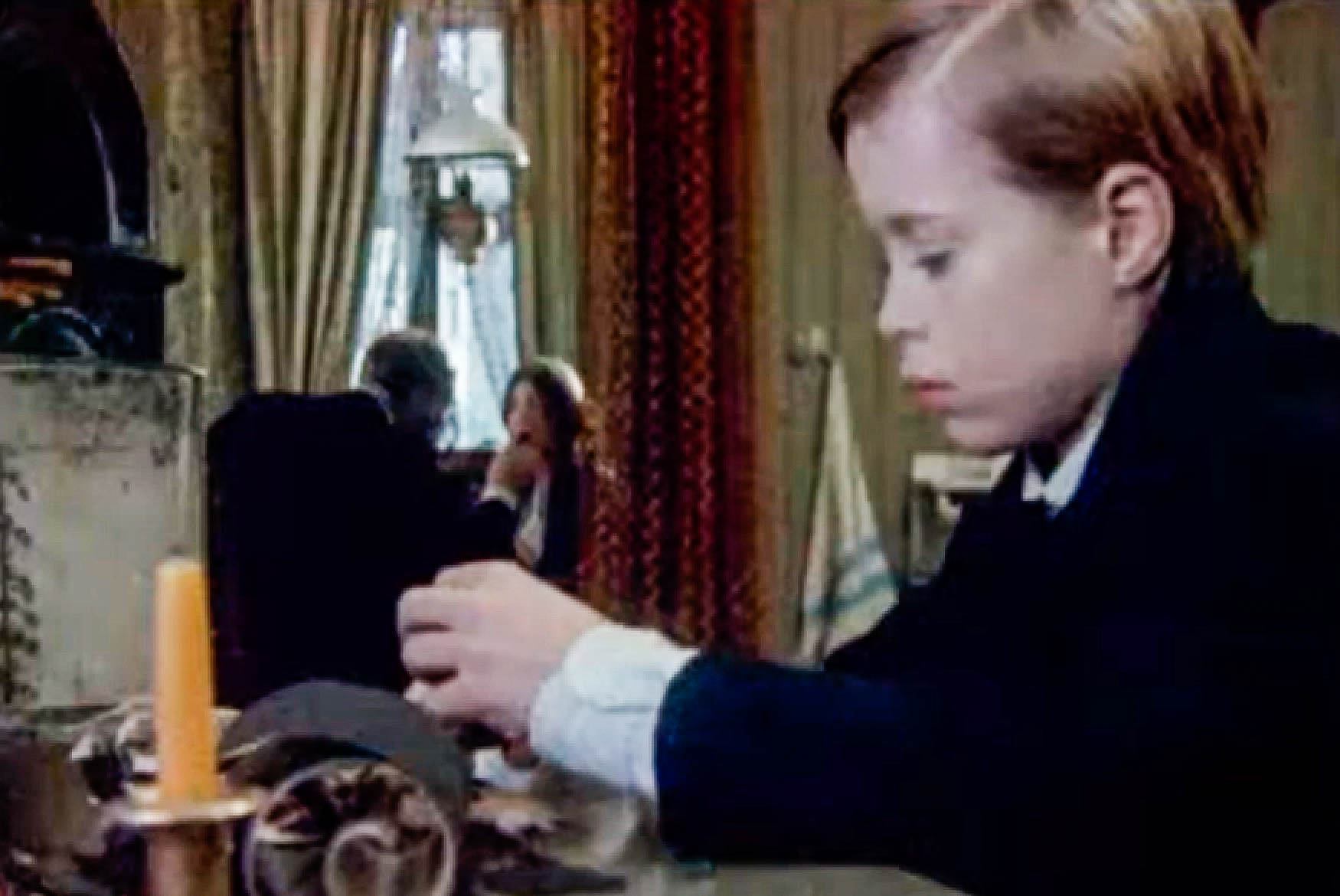 Edvard Munch(1974), Peter Watkins
Edvard Munch(1974), Peter Watkins
6. His Neighbors Disapproved Of Him
Although Munch briefly enrolled in technical college and studied engineering, he dropped out to become a painter—to the disgust of many people in his life. His father had always felt that art was an “unholy trade” and despised his son’s choice, and even his neighbors sent him nasty anonymous letters criticizing his failure to graduate. Then it got a whole lot uglier.
 Edvard Munch(1974), Peter Watkins
Edvard Munch(1974), Peter Watkins
7. His Father Destroyed His Paintings
Once Munch enrolled in the Royal School of Art and Design in Kristiania (now Oslo), it became clear that he had a massive talent, and he began experimenting with Impressionism and figure work. His father’s response was chilling. The scandalized priest actually destroyed at least one of Munch’s paintings of an unclad figure, before pulling the plug on what little money he was sending for art supplies.
Then again, maybe his father had a point. Because by then he had fallen into some very terrifying habits.
 Edvard Munch(1974), Peter Watkins
Edvard Munch(1974), Peter Watkins
8. He Fell In With A Bad Crowd
Around this time, Munch made friends with local nihilists, a group that was infamous for their disdainful treatment of women, bloodlust for brawling, and long nights drinking. Munch himself dove headfirst into this lifestyle, fighting whoever he could while out on binges, and generally viewing women’s independence with suspicion—which is ironic, given what his own love life would become.
 Edvard Munch(1974), Peter Watkins
Edvard Munch(1974), Peter Watkins
9. He Had An Illicit Affair
In 1885, Munch was a strapping 21 years old when he met the rosy Millie Thaulow. He fell in lust quickly—but there was an enormous catch. Namely, Millie was already married, and to one of Munch’s distant cousins at that. Still, that didn’t stop the pair from sneaking around, meeting in the woods near a small fishing village for trysts.
It was about as darkly romantic as it could get…but Munch was in no way prepared for its ending.
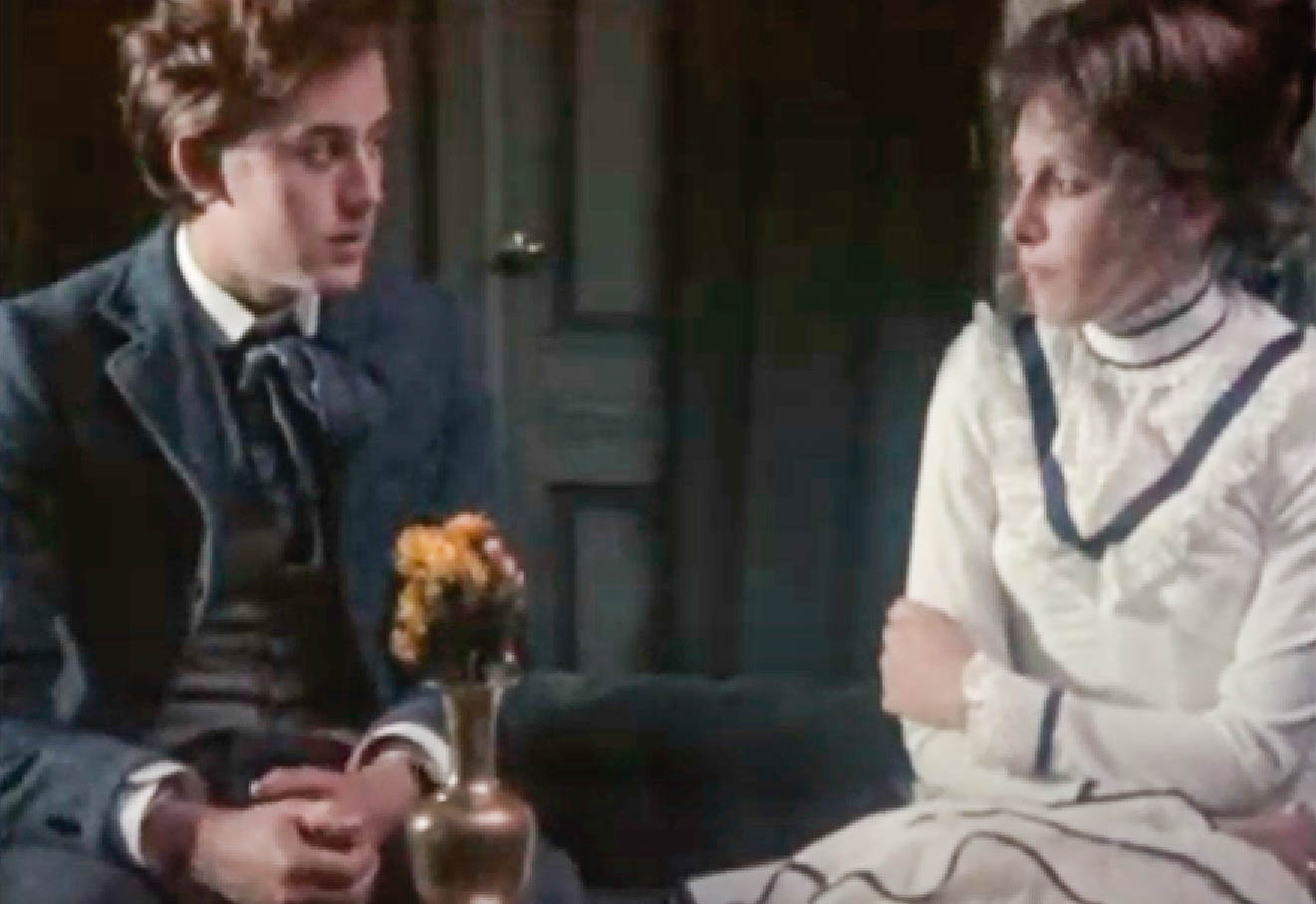 Edvard Munch(1974), Peter Watkins
Edvard Munch(1974), Peter Watkins

Sign up to our newsletter.
History’s most fascinating stories and darkest secrets, delivered to your inbox daily. Making distraction rewarding since 2017.
10. His Girlfriend Dumped Him
Millie and Edvard snuck around for two long years, feeding the flame of their desire in the shadows. But in the end, Millie was never going to leave her husband for the unbalanced artist, and she ended things. Munch—and this will be a pattern—reacted horribly to the breakup, spiraling into desolation for weeks and months after.
Eventually, though, Munch picked himself up and moved to Paris, just in time for the 1889 exhibition. It wasn’t the escape he hoped for.
 Edvard Munch(1974), Peter Watkins
Edvard Munch(1974), Peter Watkins
11. He Had A Temper
Munch had a particular talent for visually conveying psychological anguish; as he once said, “My sufferings are part of my self and my art”. But if anyone dared question him or his perspective, Munch could turn spiteful in an instant. While in Paris, Munch even ended up quitting a teacher’s class in a tantrum after receiving criticism.
In fact, Munch took pleasure in making more of whatever critics disliked; if some mocked his “random blobs of color”, he would only make more blobs than ever before. But he was about to have a rude awakening.
 Edvard Munch(1974), Peter Watkins
Edvard Munch(1974), Peter Watkins
12. He Got A Fateful Letter
That winter, Munch was still in Paris when a friend brought a letter to him, and told Munch that the missive likely wasn’t good news. Perhaps with a premonition of what the letter contained, Munch walked off to find an empty restaurant to read its tidings in peace. When he opened it, the writing was worse than he had feared.
 Edvard Munch(1974), Peter Watkins
Edvard Munch(1974), Peter Watkins
13. He Had To Save His Family
The heartbreaking letter informed Munch that his father had just passed from a stroke. The fallout was incredibly brutal. Not only was Munch devastated by the news, his father’s passing also meant the end of the family’s already paltry income. Indeed, his siblings were so desperate, Munch was forced to return home from Paris and take out a large loan from an art collector to support them.
Munch would spend the rest of his life keeping his family from falling into poverty—which made the next event all the more dangerous.
 Edvard Munch(1974), Peter Watkins
Edvard Munch(1974), Peter Watkins
14. He Was A The Center Of A Scandal
In 1891, Munch had a one-man exhibition in Kristiania—a great honor for any artist. It was also a total fiasco. Munch had been developing his signature symbolic and unsettling style for a while now…and audiences didn’t welcome him with open arms. In fact, his paintings so angered them, the exhibition closed after just one week in what the press dubbed “The Munch Affair”.
Well, Munch was about to show everyone.
 Edvard Munch(1974), Peter Watkins
Edvard Munch(1974), Peter Watkins
15. His Most Famous Work Has A Dark Backstory
In 1893, just after “The Munch Affair”, Munch entered into history. He produced the eerie, nihilistic The Scream, which many consider his masterpiece. Yet few know the harrowing story behind the work. Its production speaks to the turmoil of Munch’s mind; he first had the idea for it when he was walking and sensed an "infinite scream passing through nature" that he couldn’t let go of until he put it to canvas.
But whatever anguish The Scream contains, it’s got nothing on the horrific love affair Munch was about to enter into.
16. He Met A Ruinous Muse
In 1898, Munch was 35 years old and working in Kristiania when he met the woman who would change the course of his life—and not for the better. Tulla Larsen was 29 years old, the daughter of a local merchant, and still unmarried. Partly because of how nightmarish things got, we’ll never have an objective account of their relationship…but either way, it was a wilder ride than you can imagine.
 Edvard Munch(1974), Peter Watkins
Edvard Munch(1974), Peter Watkins
17. He Was The Prey
Munch first met Larsen when she sauntered into his studio with a fellow artist. Reportedly, that was all it took for Larsen to know she wanted Munch. She pursued him with a frightening single-mindedness, while Munch—never all that comfortable with women—claimed he began seeing Larsen nearly against his consent. Just wait, because it gets more messed up.
 Edvard Munch(1974), Peter Watkins
Edvard Munch(1974), Peter Watkins
18. He Had A Stalker
Desperate to get away from Larsen’s seductions, Munch ran as far away as he could, first to Berlin, and then hopping around Europe. He was in for a nasty surprise. Larsen wasn’t going to let him go that easily, and followed him around like a dog. Munch, more confused than ever, sometimes repelled her as best he could, and sometimes gave in. So began their dark dance.
 Edvard Munch(1974), Peter Watkins
Edvard Munch(1974), Peter Watkins
19. He Got A Bizarre Gift
Above all, Larsen wanted one thing from Munch: His hand in marriage. She would badger him nearly continuously about it, but Munch was as reluctant to propose as he was to be with Larsen in the first place. Yet this only seemed to fuel Larsen’s desire; at one point, she even gifted Munch with a chest full of her own bridal trousseau.
Soon, the more Larsen pushed, the more cruel Munch became.
 Edvard Munch(1974), Peter Watkins
Edvard Munch(1974), Peter Watkins
20. He Hated His Lover
Although Munch accepted Larsen’s grim wedding gift, his feelings toward her turned more bitter than ever before. At one point, he wrote with disgust about the feel of her “narrow, clammy lips,” claiming it felt like he was kissing a body. Even so, where in matters of art Munch had an iron will, in matters of love he clearly did not—especially since Larsen had family wealth that could set him up for life.
So instead, he made a series of awful decisions.
 Edvard Munch(1974), Peter Watkins
Edvard Munch(1974), Peter Watkins
21. He Popped The Question In An Infamous Way
Eventually, Munch did propose to Larsen. But he did it in the most offensive way he could. Writing to her, he said, “In my misery I think you would at least be happier if we were married”, giving what might be the most lukewarm proposal in history. Larsen, of course, was overjoyed and went to meet him immediately in Germany, where he was staying. However, she hadn’t counted on one thing.
 Edvard Munch(1974), Peter Watkins
Edvard Munch(1974), Peter Watkins
22. He Tried To Get Out
By the time Larsen met up with Munch, he had already changed his mind again. Of course, instead of telling her so, he claimed that he lost the appropriate paperwork that would help them get married. Undeterred, Larsen commanded Munch to take her to France, where they didn’t need any papers. He did—but he had another wily plan.
 Edvard Munch(1974), Peter Watkins
Edvard Munch(1974), Peter Watkins
23. He Was A Runaway Groom
Almost as soon as they arrived in France, Edvard turned tail and ran—literally. He escaped across the border into Italy and made his way back to Berlin sans Larsen. For a good long while, this finally seemed to do the trick, and in 1902 Munch staged his famous Frieze of Life in Berlin, free of Larsen’s influence. But this only made another dark truth come out.
 Edvard Munch(1974), Peter Watkins
Edvard Munch(1974), Peter Watkins
24. His Mental Health Took A Turn
Munch had always been a heavy drinker and carouser, but his habits turned particularly dark in this period. He began fighting men in drunken rages, and had a particularly violent battle with a fellow artist. In other words, even without Tulla Larsen constantly badgering him to marry her, Munch was in the worst shape of his life. Then everything got dialed up to 11.
 Edvard Munch(1974), Peter Watkins
Edvard Munch(1974), Peter Watkins
25. He Fell Into Despair
Munch was somehow more miserable without Larsen than with her. His drinking exploded to uncontrollable levels, and his temper unspooled along with the remaining shreds of his sanity. Soon, he was falling into blind rages almost every day, and admitted later that “My condition was verging on madness”. It was only a matter of time before it all fell apart.
26. He Hated Students
Munch had never been an even-keeled man, so it shouldn’t be surprising that he wasn’t a particularly good teacher. In fact, unlike many of his contemporaries, Munch despised the work of becoming a mentor, and never took on any protegees, even during the height of his popularity. Given how things turned out, maybe that’s a good thing.
 Edvard Munch(1974), Peter Watkins
Edvard Munch(1974), Peter Watkins
27. He Had An Unhealthy Relationship To His Paintings
Munch is now one of the most recognizable painters in the world thanks to his The Scream, but his relationship to his paintings was far from healthy or functional. He called his artworks his “children” and hated being parted from them for any length of time. Because of this, he rarely liked to sell them, preferring to keep them all for himself.
 Edvard Munch(1974), Peter Watkins
Edvard Munch(1974), Peter Watkins
28. He Had A Breakdown
In 1908, Munch’s bad habits finally caught up with him. After years of excessive drinking and mental torment, Munch collapsed into a complete physical breakdown. But that was just one of the symptoms. He also hallucinated voices and was experiencing paralysis in his body. It got so bad that even his Bohemian, seen-it-all friends knew they had to do something.
 Edvard Munch(1974), Peter Watkins
Edvard Munch(1974), Peter Watkins
29. He Went To An Asylum
At the urging of one of his old roommates, Munch went and checked himself into a sanitorium. For eight months, the artist received therapy and took on a special diet—that included far less alcohol than he was used to—in order to get back to his version of normal. The results were obvious, and Munch’s health improved. But some say he lost something crucial in the process.
30. His Work Changed
It’s an unhealthy axiom that artists are best when they’re tormented and unhappy—but in Munch’s case, it may have been true. While his paintings after he got better are colorful and more cheerful, many consider his work after his 1908 breakdown and recovery inferior to his earlier paintings. Then again, there might have been another reason for this drop in quality.
 Edvard Munch(1974), Peter Watkins
Edvard Munch(1974), Peter Watkins
31. He Became A Hermit
Although Munch got better after his breakdown, he never fully recovered. Then he made a fateful choice. The world continued to be almost too overwhelming for him to handle, so much so that he bought a property in the deep outskirts of Kristiania so that he could work in almost complete seclusion. That said, his seclusion wasn’t as innocent as it might seem.
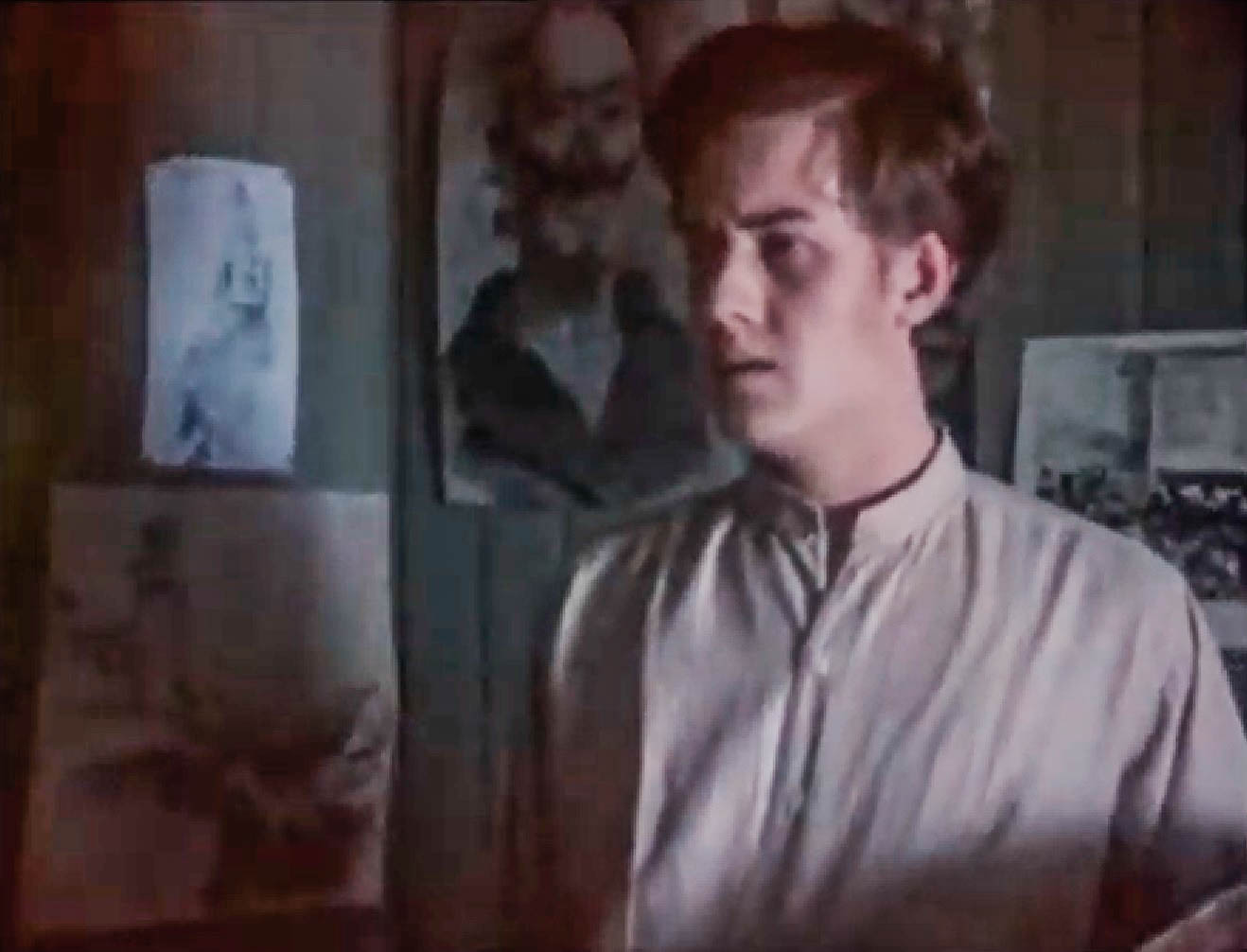 Edvard Munch(1974), Peter Watkins
Edvard Munch(1974), Peter Watkins
32. Women Loved Him
Despite his attempts to stay completely away from the world, Munch was by now relatively famous both throughout Norway and the rest of Europe. As a result, although many of his paintings from this period are of his workhorse Rousseau or landscapes, a constant stream of women also offered themselves up as models for him. That wasn’t all they did.
 Edvard Munch(1974), Peter Watkins
Edvard Munch(1974), Peter Watkins
33. He Slept With His Employees
It will surprise no one to reveal that Munch never married—he had never wanted to in the first place, but after the Tulla Larsen debacle he was well and truly ruined for the altar. However, that didn’t stop the middle-aged artist from likely “enjoying” the nubile women who showed up on his doorstep. Still, these brief brushes with human contact could only go so far.
 Edvard Munch(1974), Peter Watkins
Edvard Munch(1974), Peter Watkins
34. He Never Saw His Family
During Munch’s later years, although he still supported his family financially and would sometimes communicate with them through letters, he never visited them in person. To many people who asked, Munch claimed this almost complete solitude was necessary for him to continue painting. But to those he trusted, he revealed something much darker.
35. His Sanity Was Hanging By A Thread
In the early 1920s, decades after his breakdown, Munch admitted the truth about his self-imposed isolation. He claimed that "The second half of my life has been a battle just to keep myself upright”. Even after all those years, his sanity had not become strong enough to withstand the overstimulation of others. Still, overstimulation was coming right for him.
 Edvard Munch(1974), Peter Watkins
Edvard Munch(1974), Peter Watkins
36. He Had Split Loyalties
Even as he tried to hide away from the world, WWI began raging throughout Europe, tearing Munch’s loyalties apart. As he put it, “All my friends are German but it is France I love”. Even so, for the most part he kept his head down and managed to survive the worst of the conflict. But in 1918, just as WWI was winding down, a more dangerous enemy came for him.
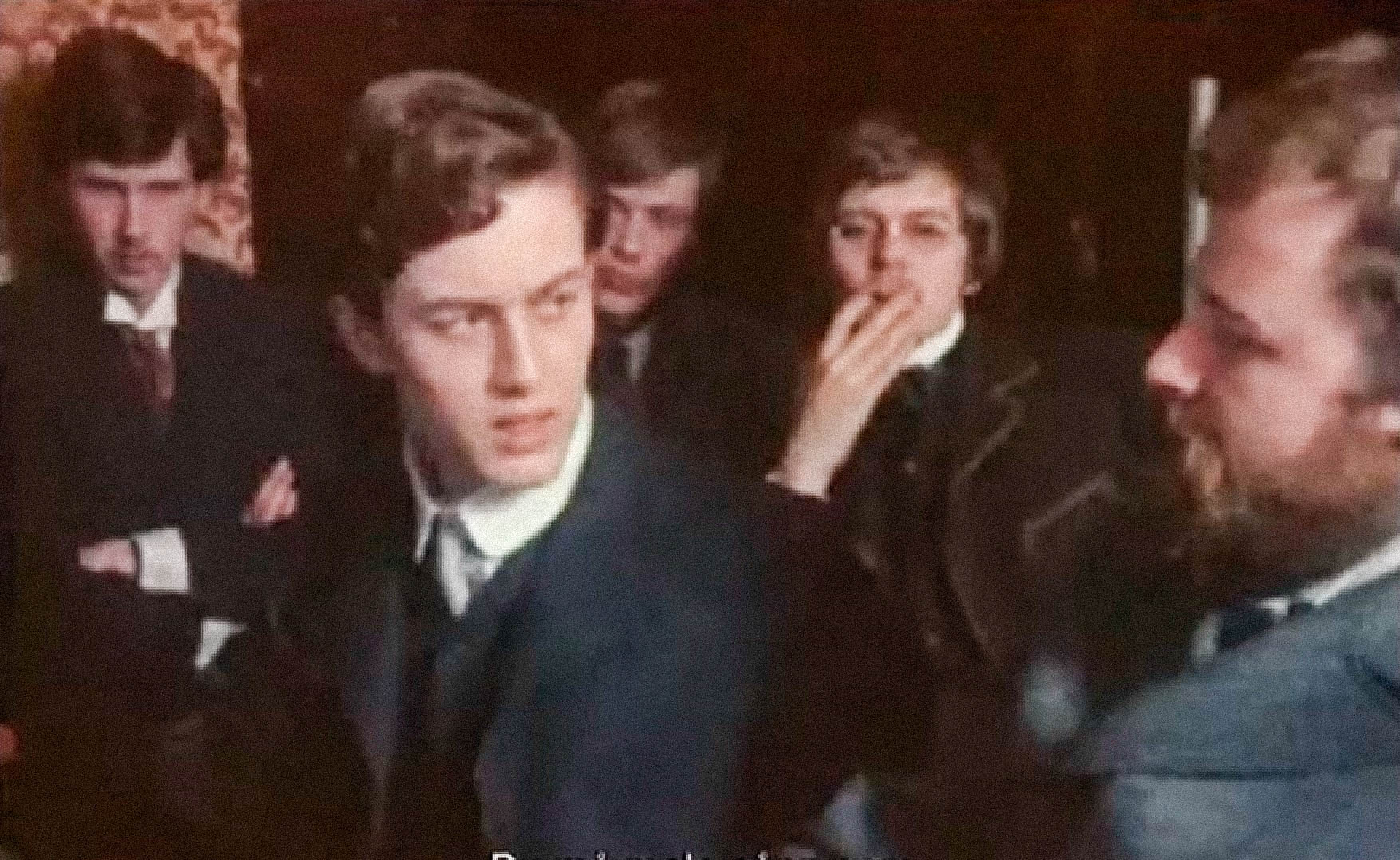 Edvard Munch(1974), Peter Watkins
Edvard Munch(1974), Peter Watkins
37. He Almost Met A Horrible End
Incredibly enough, the biggest killer in WWI wasn’t the tanks or the battles, it was the horrific “Spanish” influenza that roiled through Europe in 1918. Munch didn’t escape its wrath either, and the now near-elderly painter barely clung to life as the sickness ravaged his body. When he emerged, still breathing, a new obsession overtook him.
 Edvard Munch(1974), Peter Watkins
Edvard Munch(1974), Peter Watkins
38. He Had An Unflinching Gaze
In Munch’s final years, he developed a strange compulsion. Starting around the time his body was gaunt with the flu’s effects, he began painting every indignity old age could throw at him in self-portraits. He kept it up throughout the years, too; later, when a blood vessel in his eye burst and made him nearly blind, he decided to paint that, too.
39. He Was A “Degenerate”
Starting in the 1930s, the Third Reich came to Germany, and Munch found himself the target of their hatred. In fact, the Germans did the worst thing they possibly could to him: They dubbed his art “degenerate” and removed it from the country’s museums. For a man who loved all his paintings as “children,” the move must have devastated him…but he soon had worse anxieties.
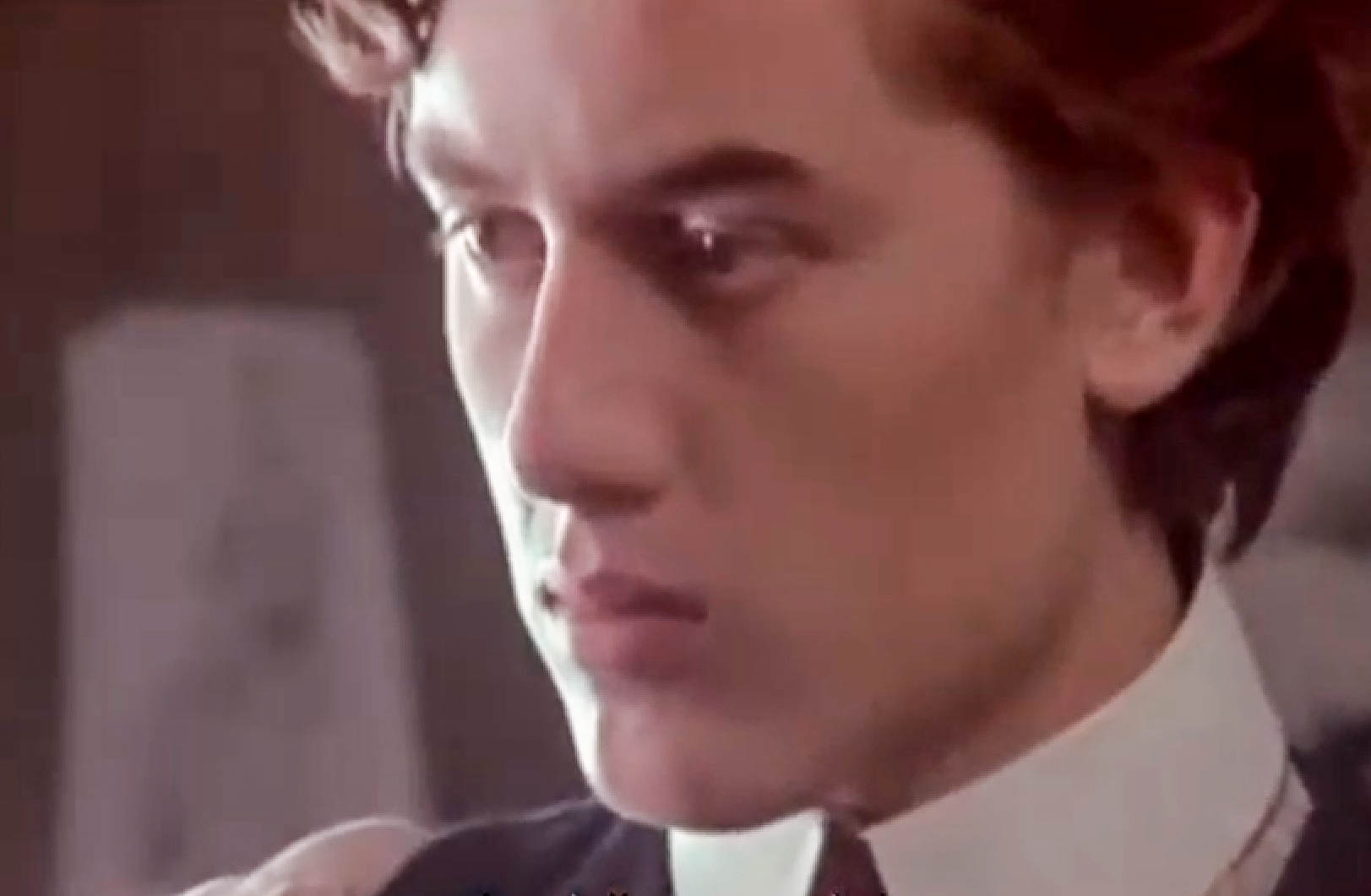 Edvard Munch(1974), Peter Watkins
Edvard Munch(1974), Peter Watkins
40. He Feared For His Children
At the time of WWII, Munch was 76 years old, with an enormous collection of his “children” in his home. So when the Germans invaded Norway in 1940, he lived in fear that soldiers would break into his place and take away all of his life’s work. This never happened, but it isn’t a completely happy ending: Out of the works the Germans did confiscate from museums, 11 are still missing.
41. He Escaped The Germans
By 1944, Edvard Munch had lived longer than he ever thought he could, and he finally succumbed to old age just a month after his 80th birthday. Fittingly, he passed in his secluded cottage, still with all of his “children” beside him. Nonetheless, the German regime had a final insult in store for him.
42. His Funeral Was A Disgrace
Despite calling Munch’s art “degenerate”, the Germans still knew a PR opportunity when they saw one. When he passed, it was the regime that organized his funeral with full pomp and circumstance. In so doing, they telegraphed to other loyal Norwegians that their mighty Munch was a sympathizer…even when in reality, there’s no evidence that he was.
43. Thieves Stole His Painting
Most people don’t know or forget about this, but Edvard painted several versions of The Scream throughout his life. Well, that ended up being a very good thing indeed. Not once, but twice, thieves stole one of the versions from a museum, once in 1994 and once in 2004. Although authorities managed to track down both, the more recent heist slightly damaged the work.
 Edvard Munch(1974), Peter Watkins
Edvard Munch(1974), Peter Watkins
44. He Was A Narcissist
Art historians have recognized Munch’s livewire, anguished contributions to art—but they also fully admit that there were very few painters as “narcissistic” as Munch was about his own pain. In 1900’s Golgotha, for example, he has the audacity to depict himself nailed to the cross just like Jesus. Okay then, Edvard.
45. His Lover Came Back
As much as Munch tried to escape her, an old ghost came back to haunt him. Tulla Larsen found him again after their first breakup, and she was once more pushing for a reconciliation and marriage. Munch, sure that she would bring him no peace, refused to see her each time that she asked. Yet just as he started growing a backbone when it came to Larsen, his friends ruined everything.
 Edvard Munch(1974), Peter Watkins
Edvard Munch(1974), Peter Watkins
46. His Friends Pulled Him Back In
After Larsen hung around for a while, all of Munch’s friends began to see the disturbing truth: She was horrifically depressed and taking huge amounts of substances to heal her pain. But instead of protecting Munch from her, they instead begged the artist to see her and put her out of her misery. It would lead to one of the most violent and mysterious moments of his life.
 Edvard Munch(1974), Peter Watkins
Edvard Munch(1974), Peter Watkins
47. He Had A Terrible Accident
Munch, feeling sorry for Larsen, agreed to meet her at last. He lived to regret it deeply. At some point during their meeting—it was so frenzied that no one knows exactly how it happened—Munch blew off part of his fingers with a revolver. Munch was beside himself at the pain and trauma, but this event had even greater consequences.
 Edvard Munch(1974), Peter Watkins
Edvard Munch(1974), Peter Watkins
48. He Became Paranoid
Aside from the physical harm he had done himself, Munch was in even more psychological distress than ever before. His intense emotions about the incident soon grew into massive paranoia and a persecution complex, with Munch eventually believing that everyone was looking at his “deformed hand” when he was out in public and were “disgusted by the sight of his monstrosity”. And that wasn’t all.
 Edvard Munch(1974), Peter Watkins
Edvard Munch(1974), Peter Watkins
49. His Toxic Ex Left Him
After their violent rendezvous, not even Tulla Larsen stuck around for her Edvard. She turned tail and ran shortly after, and then she went even further. As if to rub salt in the wound and declare once and for all that they really were over, Larsen then married one of his much younger colleagues. When Munch heard the news, his reaction was surprising.
 Edvard Munch(1974), Peter Watkins
Edvard Munch(1974), Peter Watkins
50. His Lover Betrayed Him
Despite Munch’s dread of Larsen and her demands for marriage, he was nonetheless heartbroken and humiliated that it was Larsen who left him in the end. He began obsessively painting and re-painting the shooting incident with Larsen and himself as subjects, complaining all the while that “I had sacrificed myself needlessly” in his relationship with Larsen.







